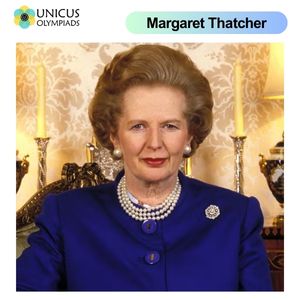

Throughout history, political leadership has been largely dominated by men, with women often excluded from positions of power and influence. However, over time, women have gradually broken these barriers, rising to the highest offices of government and leadership. Two such women are Margaret Thatcher, the first female Prime Minister of the United Kingdom, and Liz Truss, who succeeded her as Prime Minister in 2022. Both leaders faced unique challenges in their political careers and navigated significant obstacles to ascend to the top of British politics. Their leadership not only reshaped their political parties but also made significant strides for gender equality in the political realm. This article explores how Thatcher and Truss broke political barriers and the legacy of their leadership in the UK and beyond.
Margaret Thatcher, often referred to as the "Iron Lady," was the first woman to hold the office of Prime Minister in the United Kingdom. Serving from 1979 to 1990, she led the Conservative Party and became one of the most influential political figures of the 20th century. Thatcher's rise to the top of British politics was groundbreaking, as she not only shattered the glass ceiling for women in politics but also brought about significant economic and social reforms that left a lasting impact on the UK.

Thatcher's entry into politics was unconventional for a woman of her time. She joined the Conservative Party in the 1950s when women were rarely seen in high-level political roles. Her persistence, sharp intellect, and strong ideological beliefs set her apart in a political arena largely dominated by men. Thatcher's early years in politics were marked by overcoming the gender biases that existed in both her party and the wider political landscape.
As Prime Minister, Thatcher implemented a series of bold policies that reshaped Britain. She was known for her strong conservative ideology, her commitment to reducing the role of the state in the economy, and her opposition to the power of labor unions. Her policies, collectively known as "Thatcherism," had profound effects on the British economy, society, and global politics.
Thatcher's leadership was divisive. While she is praised for her role in revitalizing the British economy and her stance against the Soviet Union during the Cold War, she faced significant opposition both from within her party and from the public. Her policies, particularly those on social welfare, were criticized for increasing inequality, and her hardline approach to labor unions led to widespread strikes and protests.
Liz Truss became the second female Prime Minister of the UK in September 2022, succeeding Boris Johnson. Her rise to power marked another milestone for women in British politics. While her tenure as Prime Minister was brief and controversial, Truss’s election represented a significant moment in the ongoing struggle for gender equality in leadership roles. Truss’s policies, particularly her economic plans, sparked intense debate, but her election as Prime Minister remains an important development in the political landscape of the UK.

Liz Truss’s political career, like Thatcher’s, began in a time when few women occupied high-ranking political positions. Truss joined the Conservative Party in 1996 and quickly rose through the ranks, serving in various ministerial roles before becoming Prime Minister. Her leadership style, much like Thatcher’s, is often described as firm and unapologetically conservative.
Truss’s time as Prime Minister was marked by economic challenges, including rising inflation, a cost-of-living crisis, and the aftermath of the COVID-19 pandemic. Her government’s economic strategy, particularly the "Trussonomics" approach, focused on tax cuts and deregulation, which she argued would stimulate economic growth. However, her plans faced significant opposition and led to a financial crisis, causing the pound to fall and mortgage rates to rise.
Truss’s brief time in office highlighted the challenges faced by female leaders, particularly in male-dominated political environments. Despite the criticisms of her economic policies, her election as Prime Minister represents a significant achievement for women in politics. Truss’s leadership will be studied in the context of her policies, her handling of the economic crisis, and the political turmoil that marked her premiership.
Both Margaret Thatcher and Liz Truss made history as female leaders in British politics. However, their paths to power and the challenges they faced were quite different. Thatcher broke the gender barriers of her time by becoming the first female Prime Minister, and her policies reshaped the UK’s economic and political landscape. Truss, though facing a much different political climate, also made her mark by becoming the second female Prime Minister, albeit in a much more contested and turbulent period.
Thatcher and Truss each faced the challenge of being women in a political environment historically dominated by men. Thatcher, who rose to power in the 1970s, had to contend with the sexist attitudes of the time, often being dismissed or underestimated by her male counterparts. She used this to her advantage, building an image as a strong and decisive leader. Truss, on the other hand, rose to power in the 21st century, a time when women in politics have become more common, but still face scrutiny and resistance, particularly from within their own parties.
Thatcher and Truss share certain similarities in their political ideologies, particularly their conservative values and focus on economic liberalism. However, their leadership styles differ. Thatcher was known for her firm, sometimes uncompromising approach, often described as authoritarian, whereas Truss’s leadership has been described as more pragmatic but marked by indecision and crisis management.
Thatcher’s legacy is more firmly established, with her policies continuing to influence UK politics today. Truss’s time in office was brief and turbulent, but her election as Prime Minister represents a significant moment in the continuing struggle for gender equality in politics. Both women’s leadership has sparked debates about women in power, their ability to lead in times of crisis, and how gender influences political decision-making.